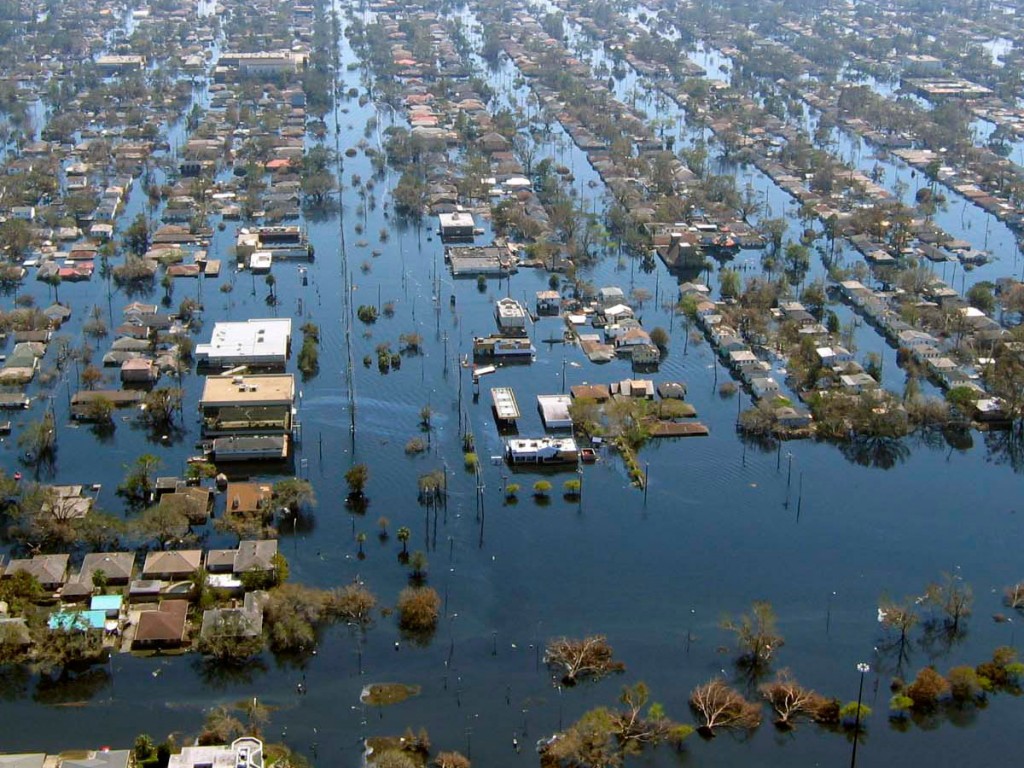A Tulane University report warns that as a result of increasing rates of sea level rise, the remaining 6,000 square miles of Louisiana’s coastal wetlands in the Mississippi River Delta will probably disappear. These wetlands are the main line of defense to the cities and ports of New Orleans and Baton Rouge against hurricanes and storm surges.
One of the report’s authors told AJOT “… a storm surge or hurricane could hit New Orleans and without coastal barriers the city could be lost. Baton Rouge, upriver from New Orleans, would also be in bad shape.”
A 2017 U.S. Geological Survey report warned: “Coastal Louisiana wetlands are one of the most critically threatened environments in the United States. These wetlands are in peril because Louisiana currently experiences greater coastal wetland loss than all other States in the contiguous United States combined.”

Findings
The Tulane report summarizes the threat as follows:
“We present an 8500-year-long marsh record from the Mississippi Delta, showing that at rates of RSL (Relative Sea Level) rise exceeding 6 to 9 mm (millimeters per) year … marsh conversion into open water occurs in about 50 years. At rates of RSL rise exceeding … 3 mm year … marsh drowning occurs within a few centuries. Because present-day rates of global sea-level rise already surpass this rate, submergence of the remaining … 15,000 km2 (square kilometers which equals 5791 square miles) of marshland in coastal Louisiana is probably inevitable. RSL-driven tipping points for marsh drowning vary geographically, and those for the Mississippi Delta may be lower than elsewhere. Nevertheless, our findings highlight the need for consideration of longer time windows in determining the vulnerability of coastal marshes worldwide.”
Background
Juan Gonzalez, one of the report’s authors, is an Associate Professor of Geology, School of Earth, Environmental and Marine Sciences at The University of Texas - Rio Grande Valley.
In an interview, Gonzalez explained to AJOT: “The main finding of this study is that once a threshold of 3 millimeters of RSL rise is exceeded, widespread marsh drowning occurs within a few centuries. When rates increase to 6-9 millimeters per year, a likely scenario in the next century, under the current sea level acceleration, drowning occurs in about 50 years. Most concerning is that the present-day rate of global sea-level rise already exceeds the 3 millimeters per year threshold and drowning of the remaining marshland in coastal Louisiana seems unavoidable”
He added: “Our work was with past sea level, not current. The current rate of sea level rise is 3.3 millimeters per year. What we found is that when the rate of sea level rise reaches 6-9 millimeters per year wetlands disappear within 50 years. We are heading in that direction but are not there yet.”
Gonzalez explained the methodology: “We took a different approach in this study and looked at the sediment record using an unmatched data set consisting of 1,000 sediment cores from the Mississippi Delta. This allowed us to look at how coastal wetlands responded to a wide range of sea level rise scenarios over the past 8,500 years”
Manmade Threats
Gonzalez says the natural protections of the Louisiana coast have been undermined by man-made levees and ship channels: “Historically suspended sediments and flooding coming down the Mississippi River flowed into the Delta region and replenished marshlands that acted as coastal barriers. Unfortunately, the construction of levees in recent years built to protect against flooding and deepening of ship channels to improve navigation have channeled river sediments away from the Delta and directly into the Gulf of Mexico.”
The report describes these effects: “Coastal marshes are among the most valuable ecosystems on the planet, yet there is widespread concern about their sustainability due to accelerated sea-level rise and other human-induced stresses.”
The result, Gonzalez says, is “that a storm surge or hurricane could hit New Orleans and without coastal barriers the city could be lost. Baton Rouge, upriver from New Orleans, would also be in bad shape” and could be lost: “We must act now to upgrade the natural barriers of marshes and wetlands that protect New Orleans and Baton Rouge or they will have to pick up and leave.”

